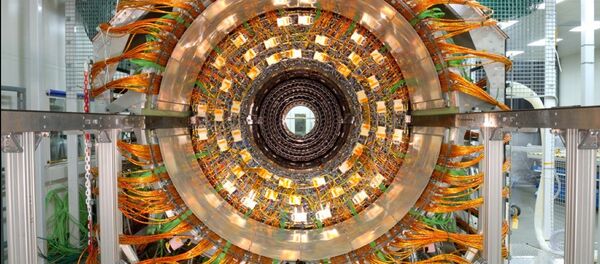"It's fantastic to see it going so well after two years and such a major overhaul," CERN Director General Rolf Heuer noted in on the organization's live blog Sunday. Heuer thanked scientists and engineers present at the lab, adding that "now the hard work starts."
The LHC's refit included the installation of new magnets, stronger energy beams and higher voltage rates, together with a thorough check of wiring, detectors and magnets. CERN is preparing the LHC for new particle-smashing collisions, expected to start in June. The organization notes that new experiments will smash particles into each other with nearly double the energy used in the first run, and as before at close to the speed of light.
Over the next three months, engineers will slowly inject protons into the LHC at relatively low energy, gradually increasing the beams' energy levels to 13 trillion electronvolts, compared to 8 trillion electronvolts used in the first round of experimentation between 2010 and 2013. Scientists expect that any new discoveries are unlikely until mid-2016.
In 2012, CERN scientists finally found the Higgs boson particle, following years or research. The Higgs boson, known in the Standard Model of particle physics as a "force carrier", was the last to be found among 17 subatomic particles used to describe the universe in the Standard Model.
Particle physics enthusiasts can find updates on CERN's live blog here.

![Scientists working with the Large Hadron Collider [LHC] are optimistic of a new breakthrough in particle physics Scientists working with the Large Hadron Collider [LHC] are optimistic of a new breakthrough in particle physics - Sputnik International](https://cdn1.img.sputnikglobe.com/img/15519/78/155197861_0:209:1597:912_600x0_80_0_0_e05a581bad735cd1866bc1aff795db35.jpg)

